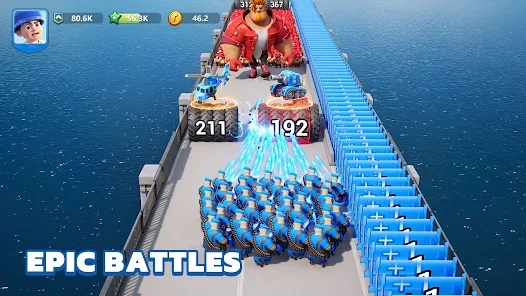Why Idle Games Are Taking the Gaming World by Storm: A Deep Dive into their Surprising Popularity
In recent years, idle games have captured the fascination of gamers around the world. These unique types of games have caught on quickly, rising from casual amusement to a significant player in the gaming industry. But what is it about these idle games that has made them so popular? This article will explore the underlying reasons for their success, while also touching on some related topics, like issues some players face, such as FIFA 22 crashes when loading a match.
Understanding Idle Games
At their core, idle games, also known as "clicker games," have a few defining characteristics:
- Minimal User Input: Players often do not need to be actively engaged in the game for it to progress.
- Gradual Progression: Players can experience growth in the game even when they are away, keeping their interest piqued.
- Reward Systems: Gamers find satisfaction in accumulating resources and rewards over time.
These factors make idle games appealing because they do not require constant attention. Instead, they allow for relaxed gameplay, which can easily fit into the busy schedules of modern life. It’s this ease that, paradoxically, turns countless players into dedicated fans.
Why Are They So Popular?
Several key aspects contribute to the surprising success of idle games:
| Factor | Description |
|---|---|
| Accessibility: | Most of these games are available on mobile platforms, making them easy to play at any time. |
| Social Features: | They often have features that allow for social interaction, boosting engagement. |
| Gamified Learning: | They introduce players to game mechanics gradually, promoting a sense of achievement. |
This combination of accessibility and engagement creates a powerful magnet for casual gamers and even more serious players. Interestingly, while you might not be racing against competitors in real-time, the innate drive to improve one's own score can lead to long hours of play.
Comparisons with Traditional Games
Now, when discussing traditional gaming experiences, idle games provide a different approach, especially seen in the issues faced by many players of intense games like FIFA 22. Players regularly crash when loading matches, leading to frustration and a loss of enjoyment. In contrast, idle games minimize frustrations by allowing players to enjoy a gaming experience even amidst technological hiccups. Here’s a quick summary of how they differ:
- Engagement Levels: Idle games require less from players in terms of time and effort, while traditional games typically demand high levels of engagement.
- Nature of Competition: Idle games are often more about personal achievement than direct competition, reducing stress.
- Learning Curve: Idle games ease players into the gameplay, while traditional games may present steeper learning curves.
The Future of Idle Games
As new technology emerges, the likelihood of idle games evolving is high. They will incorporate more interactive elements while maintaining their core functions. It's vital for developers to ensure that these games remain **fun, engaging, and rewarding**. This could also open up avenues for complex game modes within idle systems.
Conclusion
Idle games represent a fascinating shift in the gaming landscape. They cater to a diverse audience by melding simplicity with engaging mechanics. As more players discover the joys of these games, it is likely they will continue to grow. So, whether you’re looking to unwind or find a game that fits your lifestyle, idle games provide an inviting option. They take the gaming world by storm, offering different experiences while addressing common frustrations faced by players of traditional games. Are you ready to jump into the world of idle games?



